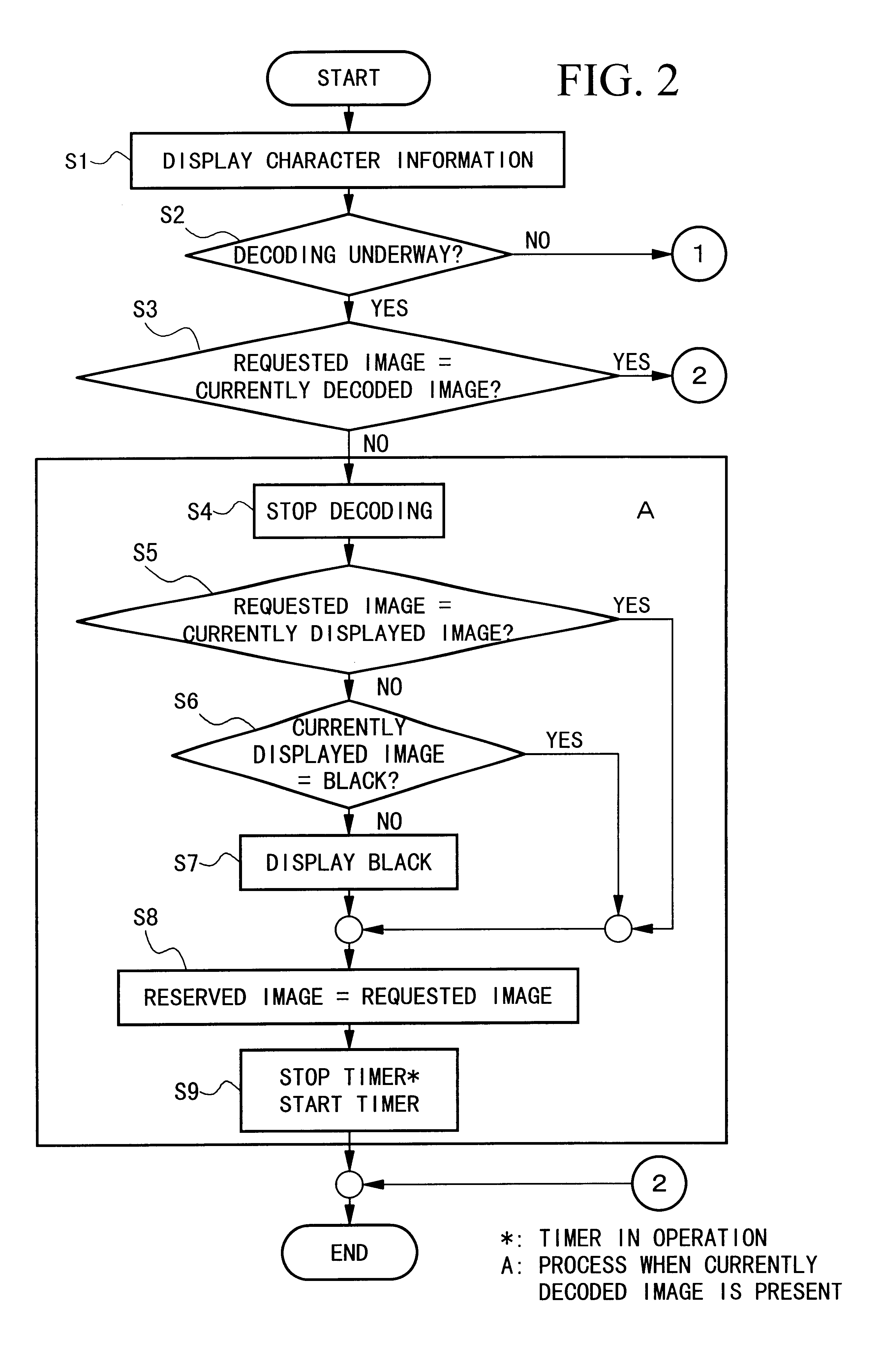Portable telephone
a telephone and portability technology, applied in the field of portability, can solve the problems of lower operability, time delay in displaying the next image, mismatching of characters and images, etc., and achieve the effect of improving operability and speeding up response speed
- Summary
- Abstract
- Description
- Claims
- Application Information
AI Technical Summary
Benefits of technology
Problems solved by technology
Method used
Image
Examples
first embodiment
FIG. 1 is a block diagram illustrating a portable telephone (portable video telephone) according to this invention. This telephone has an operation input section 3 having keys, buttons, dials and so forth which a user can operate, and a control section 4. In response to a search request signal from the operation input section 3, the control section 4 searches the registered data based on phone-book sort information 2.
Based on data of the search result, the control section 4 reads information corresponding to the search result data from a phone-book character-information memory section 5 and a phone-book image-information memory section 10 and displays the information on a display section 9. The display section 9, which is constructed by a display device such as a liquid crystal display, comprises a character-information display section 8 and an image-information display section 13. Character information read from the phone-book character-information memory section 5 is processed so ...
second embodiment
The second embodiment of this invention will now be described. The second embodiment can overcome the following problem. According to the structure that activates the timer upon operation of the individual keys and starts decoding image information after a given time set in the timer in a continuous search as done in the first embodiment, when the following key operation is done during decoding, it is necessary to perform a process of stopping the decoding process in parallel to the execution of a process of displaying the screen which is associated with this key operation. This puts a burden on the control section and thus lowers the operability.
This point will now be discussed with reference to FIG. 9. The vertical scale in the figure represents the delay time (timer activation time) from the input of a key signal to the initiation of decoding of image information based on the key-signal oriented search result, and the horizontal scale represents the interval of key operations (cl...
third embodiment
The third embodiment of this invention will now be discussed. The third embodiment can overcome the following problem.
With the use of a portable telephone having a capability of scrolling phone-book data, a user can consecutively scroll phone-book data by depressing the operation key longer than the normal time and stop scrolling by releasing the operation key the instant the target data is displayed. Therefore, the CPU determines that the scroll-involved display is intended when a given time passes since the first depression of the operation key and determines that scrolling should be stopped when the operation key is released.
Conventionally, image decoding would start immediately upon the first depression of the operation key. If a given time until the scroll-involved display starts is shorter than the decoding time, therefore, it is necessary to execute a process of stopping image decoding or the like when the display mode is switched to the scrolling display mode. As this decodi...
PUM
 Login to View More
Login to View More Abstract
Description
Claims
Application Information
 Login to View More
Login to View More - R&D
- Intellectual Property
- Life Sciences
- Materials
- Tech Scout
- Unparalleled Data Quality
- Higher Quality Content
- 60% Fewer Hallucinations
Browse by: Latest US Patents, China's latest patents, Technical Efficacy Thesaurus, Application Domain, Technology Topic, Popular Technical Reports.
© 2025 PatSnap. All rights reserved.Legal|Privacy policy|Modern Slavery Act Transparency Statement|Sitemap|About US| Contact US: help@patsnap.com



